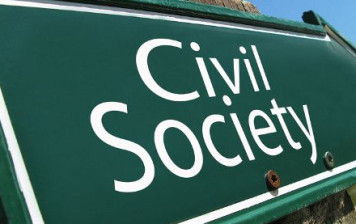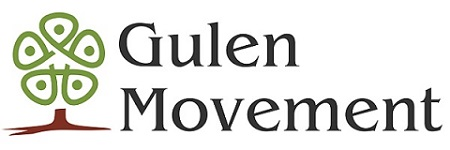
Helen Rose Ebaugh
Local circles are typically organized in two ways: (l) according to location and neighborhoods; and (2) according to education and jobs. For example, doctors in the same general area will meet together as will dentists, lawyers, accountants, teachers, factory workers, etc. While Gülen movement participants may also belong to larger professional organizations associated with the movement that has periodic gatherings, they meet weekly or twice a week in smaller groups of about 10–12 people. In these small meetings, participants talk about a variety of things, including religion, technical work, family and any aspect of life that is raised by members. Sometimes the group reads from the Qur’an or the Prophetic tradition; on other occasions, the group may host a speaker. More frequently, the members in a given group simply come together to share their lives, whatever might be important that particular week. As one member said, “What is most important is coming together and sharing with one another. Every week I close my Friday night and tell my friends not to call me or plan anything. Meeting in my local circle is the most important event of my week.”
The group of workers in Bursa meet in local circles of 20–25, once a week with newcomers to the Gülen movement and once with people who have been in the movement a longer time. As one worker said, “In our culture we have values which have been lost so we read motivational materials such as Gülen books or videos or works by Nursi or something from the Prophetic tradition.” Because they are not as wealthy as the businessmen, they cannot support an entire school or ten scholar- ships as some businessmen do but perhaps three of them support one scholarship. In addition, the group in Bursa has created Kor-Der, an association that organizes activities in 120 townships around Bursa to spread the service message of the movement, to garner donations and to determine needs in the local villages. Therefore, while the workers’ group is not able to make large donations of money, members donate many hours of time soliciting assistance from others to support service projects.
As one businessman explained,
“Being in the same type of business means that we have a strong basis for coming together and understanding one another. We also network and refer customers among us. Then we have a basis for discussing projects that need doing in our community and how we can help with these projects. We also see the results of our efforts which encourage us to be even more generous.”
In fact, helping one another to be successful in their businesses is promoted by Mr. Gülen. In 2007 Tuskon, a Gülen-inspired business association with 1,500 members, sponsored a conference in Istanbul for a thousand business owners from developing countries such as Africa and Central Asia at which they were coached in ways to grow their businesses. Assisting one another in a given industry and networking among themselves is one reason that the Gülen business community in Turkey is known as one of the richest communities in the country.
Organizing on the basis of natural groups, such as professions or occupational groups, also facilitates recruitment. Groups that share strong distinctive identities and dense interpersonal networks are highly organized and hence readily mobilized. The “bloc recruitment” of preexisting solidarity groups represents the most efficient form of recruitment. Movements that focus on preexisting or “natural” groups and that link their vision of change to that preexisting group culture are more effective than efforts to recruit lone individuals. Individual recruitment requires greater resource investment and is much slower than bloc recruitment.
All of the local circles I visited were gender-segregated. When I inquired about women members, in each circle I was told that the circles are open to women but that the women prefer to meet by themselves and were more comfortable with other women. In the case of the engineers, for example, about 10% of women engineers meet in mixed circles. There are parallel local circles for women engineers where the remaining 90% meet. The same holds true for doctors, nurses, dentists, accountants, blue-collar workers, etc. One reason for the segregation, I was told, is logistical. The women prefer to meet earlier in the day before their children are home from school activities and require their attention.
The issue of the role of women in the Gülen movement was raised repeatedly throughout my interviews. Critics of the movement, both in Turkey and in Houston, Texas, maintain that women in the movement are viewed and treated subserviently, are expected to fulfill the traditional roles of raising the children and taking care of the home, are encouraged to wear the headscarf, are discouraged from social interactions with men and are discouraged from public leadership roles. In my interviews with women, in Turkey and in the United States, I discovered a wide array of differences among women both in their judgments of how they are treated within the movement and in observing the roles played by women in movement activities. For example, in San Antonio, Texas, a covered woman has been the spokesperson and master of ceremonies at the annual Ramadan dinner, which is attended by hundreds of people from the community. This has not been the case in Houston, Texas, where a man has always lead the event and served as president of the local group. In Turkey many of my female interviewees value the fact that they are allowed to teach in the Gülen-inspired schools and hospitals while wearing the headscarf, something forbidden in the public institutions in Turkey. Many of these women find empowerment in being able to decide for themselves what to wear as well as a space in the Gülen-related institutions to exercise their individuality and abilities. (The issue of women in the Gülen movement has been understudied by academic outsiders, especially scholars also well versed in Turkish culture, who can bring a systematic and non-ideological perspective to the topic)
I interviewed in one women’s local circle in the Asian part of Istanbul. The group consisted of a mixture of women from varying occupational backgrounds including one former and one current teacher in a Gülen-inspired school, a lawyer, an accountant, a secretary, a salesperson and a stay-at-home Mom. When I asked how they felt about being excluded from male circles, I was corrected in the following way, “We are not excluded. We don’t want to meet with the men. We feel more comfortable meeting among ourselves. Then we can talk about what interests and concerns us which is different from that of the men.”
The circles of women, I learned, operate similarly to those of the men. The groups meet every week, read from the Qur’an, the Prophetic tradition, Mr. Gülen’s writings and other inspirational books. The women then discuss the topic, especially how it relates to their own lives. They also discuss their families, problems they might at home especially with their children and service projects that need their help. Those women who work outside the home make financial contributions to Gülen projects. The women also engage in kemes, that is, the Turkish practice of making hand-crafted articles (e.g. embroidery, crocheting, artwork, etc.) that they then sell and give the profits to projects in need of assistance.
An essential part of every local circle is supporting some needy project, either in Turkey or in another country. When asked how the group learns about needs in the community, I was told repeatedly that the Gülen-inspired community is tight-knit and people know which projects need help. Some people have been in contact with and supporting educational projects for years and know what is going on in the educational field. Others are connected to the hospitals and know what needs exist there. Still others travel outside Turkey and are aware of needs in other countries. Word circulates which projects are especially in need at a given time and people in local circles get together and decide what they can do.
In addition to financial giving throughout the year, twice throughout the year Muslims celebrate special festivals that call forth the sense of sharing with the needy. During the month of Ramadan when every practicing Muslim fasts from sunrise to sunset and makes a special effort to live a virtuous and disciplined life, there is also the requirement of sharing one’s abundance with those in need. Almost without exception, Muslims around the world are particularly generous during Ramadan with their charitable contributions.
The second festival is Eid-ul-Adha, the Day of Sacrifice, that occurs right after hajj, the annual pilgrimage to Mecca that is required once in a lifetime for all able- bodied Muslims who can afford it. On the Day of Sacrifice Muslims sacrifice animals who have been deemed halaal or fit for sacrifice, in remembrance of the sacrifice that Abraham made to God. They not only eat the meat themselves but distribute it amongst their relatives, neighbors and friends and finally, one-third is given to the poor and hungry. The goal in many Muslim communities is to join together to see that no impoverished neighbor is left without sacrificial food during this day.
At the time of Eid-ul-Adha several months prior to my interviews, a group of businessmen from Bursa traveled to Darfur, Sudan, where they bought three bulls to slaughter and gave as food to poor people there. They also met other businessmen there whom they convinced to get involved in building a school in one of the Darfur cities in order to make sure that the youth there are being educated.
Source:
Ebaugh, Helen R. 2010. “The Gulen Movement A Sociological Analysis of a Civic Movement Rooted in Moderate Islam.” New York: Springer. Pages 48-52.
Tags: Gulen Movement | Organizational structure within the Gülen movement | Participation in the Gülen movement |Related Articles

Don’t Make A Mystic into a Martyr: Fethullah Gülen as Peacebuilder
My conclusion? He’s a mystic in the Sufi tradition of Islam. And like other famous mystics in history—notably Gandhi, or Rumi—from whom Gülen draws deeply, Fethullah Gülen is…

Gülen movement’s engagement with political processes
The Gülen movement offers a new sociopolitical language to expand and deepen public discussion, and mobilize traditional social sectors that had hitherto been strictly marginalized. Its rival vision…

Forms of Islam: Popular Islam – Hizmet-Gülen Movement and Fethullah Gülen
As the movement has expanded it has inevitably become more decentralized. Today it embraces large numbers of independent private groups, committees, foundations, centers, and individuals; it receives major…
